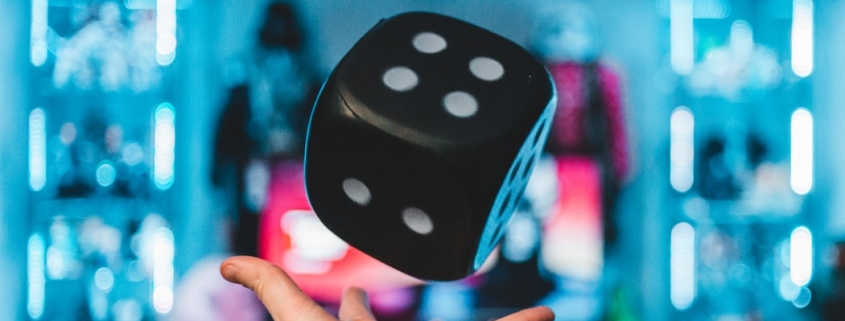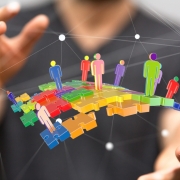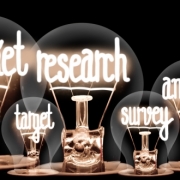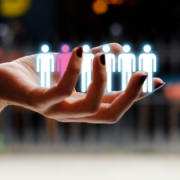USING GAMIFICATION TO BOOST CUSTOMER EXPERIENCE
Gamification, the practice of providing rewards to drive people to undertake particular actions, can improve customer experiences (CX) whether the strategy is used on the customer or on the employee side, according to experts familiar with gamification strategies. BARE shares an article of CMS.
“An engaging way to interact with customers is by using games that reward them for playing and shopping with you,” said Greg Heilers, co-founder of Jolly SEO. “One example of gamification that has been running for over 30 years is McDonald’s annual Monopoly game. Over the course of the campaign, more than $40 million in prizes have been given away. Every time it runs, it increases McDonald’s sales by 1% to 6%.”
Nike has also boosted the customer experience — as well as financial results — with gamification, Heilers said.
Nike’s running app, Nike+, tracks customers’ data and their physical activity in order to market directly to them in the future, via the Nike FuelBand. Wearing the Nike FuelBand is designed to add excitement into everyday runs. By integrating with the Zombie Run! app, customer experience is enhanced during product usage, according to Heilers. The Nike+ app allows people to compete with people from all over the world, displaying their achievements via points and trophies when connected to social media.
Heilers also pointed to the bottom-line success of the Nike program: increased engagement with customers, with the member base more than doubling the first six years of the program and a marks share increase of about 14% in the first four years after launch.
Gamification Can Make Products Stickier
“The gamification strategy to boost CX I recommend is called ‘unlock new features,’” said Alexander Knoll, co-founder and CEO of Condens. “The idea is to restrict the functionality of a digital product at the beginning of the user’s journey. As users explore the product and complete the first tasks they unlock new features.”
This strategy serves three purposes, according to Knoll:
-
Limiting the number of features helps avoid overwhelming people, which makes it especially useful during an onboarding process.
-
Unlocking new functionality gives a sense of achievement and releases endorphins, increasing the desire to unlock even more.
-
The psychological effect of loss aversion will keep users in the product longer because the earned features are worth more than if those same features had been available from the start.
“Games made use of this approach successfully as the player gets new equipment or can access new areas of the game after completing certain tasks,” Knoll said. “Hacker News is a website that makes use of this strategy as users unlock new features when they earn karma points for creating good content.”
Contact Center Employees Benefit from Gamification, Too
Contact center employees, a critical part of CX efforts at many organizations, also benefit from gamification.
According to a 2019 survey from TalentLMS:
-
Nine in 10 employees say gamification makes them feel happier at work.
-
89% of employees would be more productive if their work was more gamified (vs. 87% in 2018).
-
83% say that gamification in the recruiting process would make a company more desirable.
-
83% of those who receive gamified training reported feeling motivated.
Similarly, gamification can help customer service agents focus more on CX and other company goals, according to Chuck Koskovich, TELUS International chief operating officer. “Customer service agents don’t want to learn from boring slide presentations and six-inch binders. They want engaging, immersive tools that elevate their learning and productivity. Gamification is a highly useful strategy to incorporate into employee training that in turn boosts their engagement, performance, and ultimately customer outcomes.”
For example, wearable technology products can be difficult to understand, yet agents are required to have enough knowledge to answer customers’ questions and troubleshoot problems, Koskovich explained. In these scenarios, TELUS International has had the most success by incorporating gamification into the learning process at its global customer experience and IT delivery centers. For example, a five-level game with points tells players (agents) the technical “story” of the product, complete with a quiz at the end to test their retention, resulting in improved product knowledge learned in an engaging way.
TELUS also uses gamification as part of its instructional design, Koskovich said. “During employee training, we utilize experiential learning and interactive activities and treat it similar to a ‘laboratory’ environment with equipment emulators, role play and call simulation, as well as sensitivity training. This allows agents to practice, learn by trial and error, give and receive feedback, receive recognition, and be coached to improve their customer service delivery.”
Best Gamification Practices
Creating meaningful engagement through gamification that delivers value to the customer is a complex undertaking, said Jon Cooper, co-founder and CEO at Life.io, which has found success with the following strategies:
-
Test, test, and run more tests: Companies need to be flexible when launching gamification elements and focus on innovating and iterating constantly around customer feedback. The most minute details can make an enormous difference in a gamified experience. Take for example a reward economy (e.g., points or coins). What is the right number of points to assign for a given task? What should the value of those points be? Make points too hard to achieve and people are discouraged. Make them too easy and people devalue them.
-
Data: Companies need to have a centralized place to monitor and report on the success of these game elements. For instance, being able to track who is engaging with rewards or building up points are a few components to look at. To get a complete picture, you must go beyond measuring the starting and ending points of the customer journey, and measure data at each stage of the user funnel.
-
Behavioral economics: Behind every action is a behavior. By understanding the theories of behavioral economics, companies can nudge consumers along the shopping experience and subconsciously build trust and prime customers to complete the transaction.
Read the original article in full here.
For more information on how we can help you set up a mystery shopping program, send us a note here. We, at BARE, believe in the ‘why’ behind the reasons, and we will provide actionable insights to help you provide the best experience for your customers.
Disclaimer of endorsement: Any reference obtained from this article to a specific business, product, process, or service does not constitute or imply an endorsement by BARE International of the business, product, process, or service, or its producer or provider.










